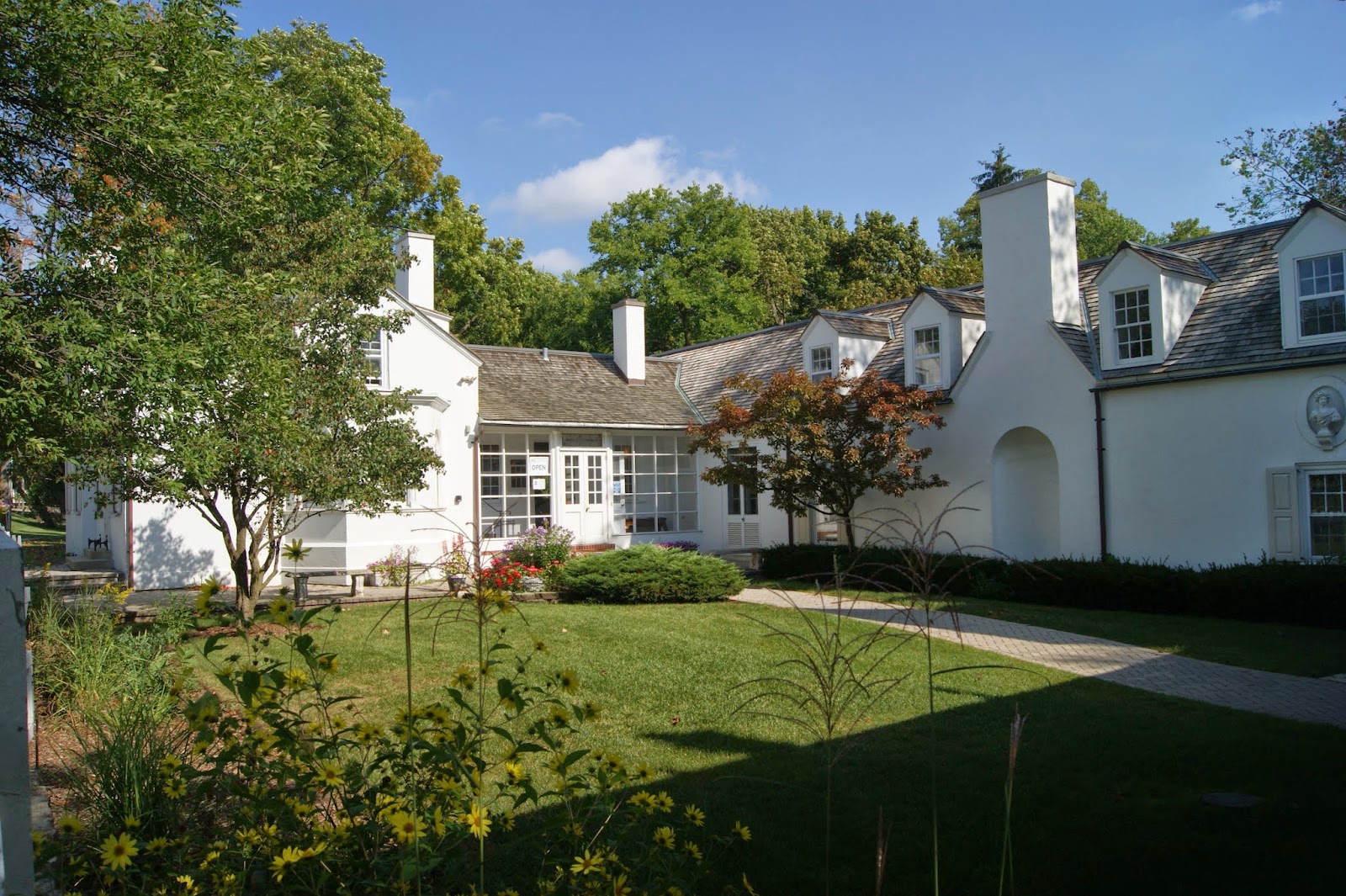Once a Civil War era farmhouse of five rooms, the building was purchased by David Adler in 1917. Over the years, Adler created a 23-room home in the manner of a Norman farmhouse, complete with courtyard, terraces and gardens reflecting his personal style of architecture. After his death in 1949, his family gave the house and estate to Libertyville to be used for educational and recreational purposes. The house remained unoccupied until an organization of artists, the Libertyville School of Folk and Old Time Music became an intricate part of the unique programs offered in the house.
In the spring of 1979, Mrs. George W. Boehm, a previous chairman of the renovation committee and president of the David Adler Music and Arts Center, sought the advice and interest of William McCormick Blair, who was president emeritus of The Art Institute of Chicago. He owned a David Adler home house in Lake Bluff and was deservedly known as Chicago's elder statesman of cultural leadership. At the age of 96, Blair asked to see the art and music programs in action at the house. "Much impressed with the joy and enthusiasm I had witnessed, I drove away through neighborhoods filled with young families, retired persons, and singles -- all reaching out for artistic experience and the company of friends. I wanted to be a part of it" said Blair. He founded in October 1980 the David Adler Cultural Center as a nonprofit organization. Early in 1981 Blair launched a start-up fund raising campaign, he raised $250,000 before his death in March of 1982. Of that $250,000, $85,000 was spent on initial restoration, which included replacing the Zuber wallpaper in the dining room, obtaining the original dining room furniture, returning five rooms of the house to the original colors, restoring the wooden floors, installing a photo exhibit of Adler Homes and much more. The Center spent $100,000 improving programs, providing adequate staff and buying much needed equipment.
Until 1981 the Center operated with a dedicated group of volunteers and part-time house manager. It was then that part-time salaries were established for a director of music programs, a director of art programs and the chief administrator. A full time salary/bookkeeper was also hired. Over the years the positions of the art and music directors were elevated into full time status, in addition, the Center soon employed a part-time bookkeeper and an evening receptionist. At it's prime the Center had instructors teaching folk music to suzuki classes as well as 12 art instructors teaching over 30 different art classes. There were over 200 additional musicians and instructors who were employed to conduct workshops, concerts and barn dances. In order to supplement staff, over 100 volunteers offered their time to present such programs as the barn dances, concerts, beginner's jam and open stage nights, sketch nights, the Adler holiday sale, and Festival of the Arts.
Today, the historic property, nominated to the National Register of Historic Places on November 22, 1999, includes the home and 11 acres. All of the public spaces are intact, and the major historic features remain. The property continues to reflect Adler’s eclectic approach to architecture, his great sensitivity to proportion and design and reflects the relationship of his home to the many others that he subsequently designed. The programs are still in tact but have suffered with the economic downfall. New Executive Director, Amy Williams hopes to rebuild some of the iconic structures and programs of the Center that are a part of what made it a legacy.
For more information on the current programs or to donate call 847-367-0707 or visit www.adlercenter.org




No comments:
Post a Comment